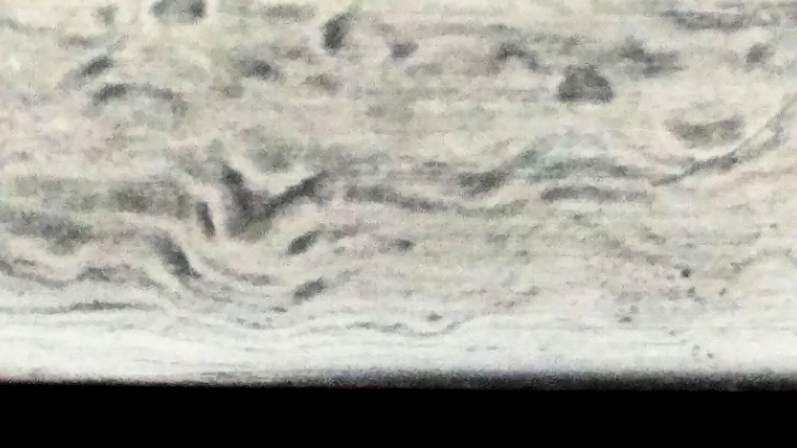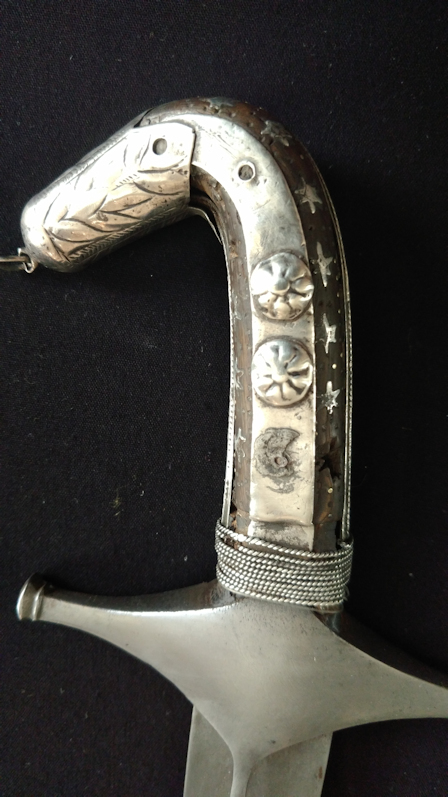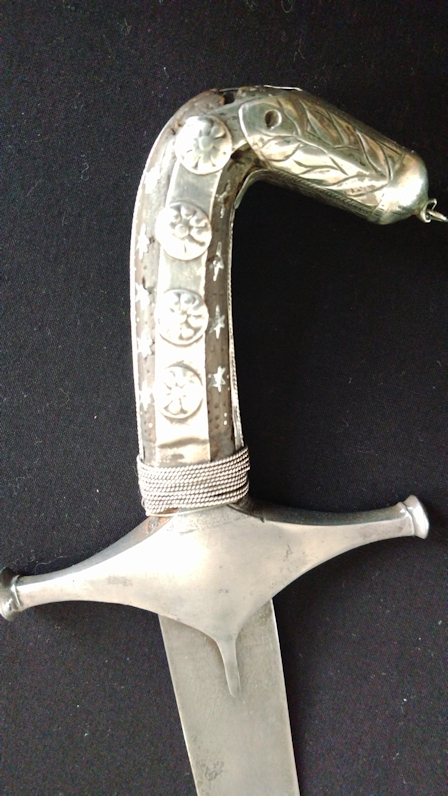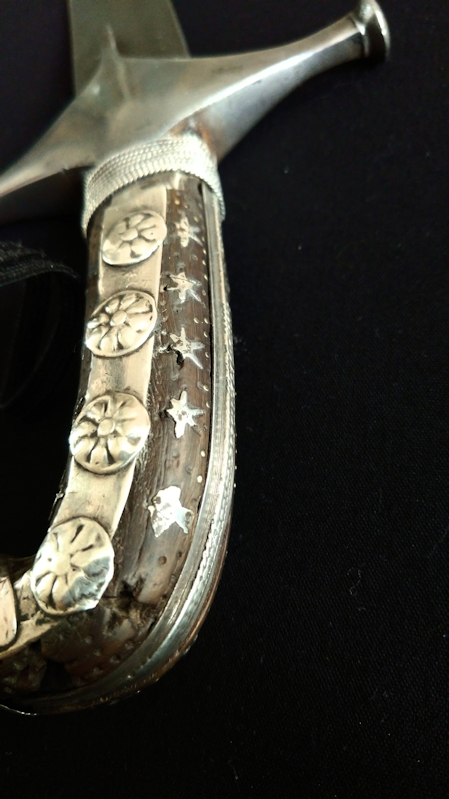Catalogue description:
Early 19th c Indo Persian Scimitar, 31 inch single edged, curved, watered Damascus steel blade. Steel disk ended cross-guard with double langets. Polished wooden grips with inlaid star and stud decoration. Silvered disk decorated slab overlays leading to the silvered floral decorated cap pommel. Base of grip with twist silvered wire binding.
My Stats:
Weight, sword: 1lb 10.5oz (0.75kg)
Length overall: 36'' (91.5cm) Blade: 31'' (79cm) measured across the arc of the blade.
POB: 8'' (20cm) from middle of cross-guard
Profile taper: 1.23'' (31.4mm) at ricasso, 1.08'' (27.4mm)at mid blade, 0.58'' (14.7mm) 2 inches from tip.
Distal taper 0.21'' 5.3mm) at ricasso, 0.15'' (4mm)at mid blade,. 0.09'' (2.2mm) 2 inches from tip.
Hilt missing some of the stud and star decorative inlays and two of the silver rosettes. Metal appears to be silver or an alloy thereof, not silver plate.
I think the description "watered Damascus steel" is a bit poetic. I wouldn't know wootz if it bit me but I feel fairly confident to describe this as mechanical damascus or pattern welded steel. I have used a weak solution of ferric chloride to bring out the pattern. The early 19th-century date may also be a bit optimistic, I would think late 19th, early 20th century.
Anyway please feel free to chime in, I welcome any and all suggestions/comments, particularly as regards terminology, origin and date.





